Hominines may have originated in Eurasia during the late Miocene, or they may have dispersed into Eurasia from an unknown African ancestor. The diversity of hominines in Eurasia suggests an in situ origin but does not exclude a dispersal hypothesis.

A new fossil ape from an 8.7-million-year-old site in Türkiye is challenging long-accepted ideas of human origins and adding weight to the theory that the ancestors of African apes and humans evolved in Europe before migrating to Africa between nine and seven million years ago.
Analysis of a newly identified ape named Anadoluvius turkae recovered from the Çorakyerler fossil locality near Çankırı with the support of the Ministry of Culture and Tourism in Türkiye, shows Mediterranean fossil apes are diverse and are part of the first known radiation of early hominines—the group that includes African apes (chimpanzees, bonobos and gorillas), humans and their fossil ancestors.
The findings are described in a study published today in Communications Biology co-authored by an international team of researchers led by Professor David Begun at the University of Toronto (U of T) and Professor Ayla Sevim Erol at Ankara University.
"Our findings further suggest that hominines not only evolved in western and central Europe but spent over five million years evolving there and spreading to the eastern Mediterranean before eventually dispersing into Africa, probably as a consequence of changing environments and diminishing forests," said Begun, professor in the Department of Anthropology in the Faculty of Arts & Science at U of T. "The members of this radiation to which Anadoluvius belongs are currently only identified in Europe and Anatolia."

*****
Cross sectional anatomy of the palate in Anadoluvius and other hominids (not to scale).
Ekembo and extant hominids redrawn from31 Rudapithecus modified from40. Ouranopithecus redrawn from41 based on a ct scan. The Ardipithecus specimen, modified from42, is a surface rendering derived from ct scans and does not show the cross section but the lateral aspect. The Ekembo specimen is based on BMNH 16664, the holotype of Ekembo nyanzae. The Rudapithecus specimens are RUD 12, a female, and RUD 44, a male. The photographs to the right of the line drawings of Rudapithecus are the original specimens. The Anadoluvius specimens are CO-2100/2800 (female, left) and CO-205 (male, right), with photographs of casts of the reconstructed specimens (see SI for details of the reconstruction.) Line drawings of Anadoluvius are original to this work.
*****
The conclusion is based on analysis of a significantly well-preserved partial cranium uncovered at the site in 2015, which includes most of the facial structure and the front part of the brain case.
Excavation of the Anadoluvius turkae fossil, a significantly well-preserved partial cranium uncovered at the Çorakyerler fossil site in Türkiye in 2015. The fossil includes most of the facial structure and the front part of the brain case. Credit: Ayla Sevim-Erol
"The completeness of the fossil allowed us to do a broader and more detailed analysis using many characters and attributes that are coded into a program designed to calculate evolutionary relationships," said Begun. "The face is mostly complete, after applying mirror imaging. The new part is the forehead, with bone preserved to about the crown of the cranium. Previously described fossils do not have this much of the brain case."
The researchers say Anadoluvius was about the size of a large male chimpanzee (50-60 kg)—very large for a chimp and close to the average size of a female gorilla (75-80 kg)—lived in a dry forest setting, and probably spent a great deal of time on the ground.
"We have no limb bones but judging from its jaws and teeth, the animals found alongside it, and the geological indicators of the environment, Anadoluvius probably lived in relatively open conditions, unlike the forest settings of living great apes," said Sevim Erol. "More like what we think the environments of early humans in Africa were like. The powerful jaws and large, thickly enameled teeth suggest a diet including hard or tough food items from terrestrial sources such as roots and rhizomes."
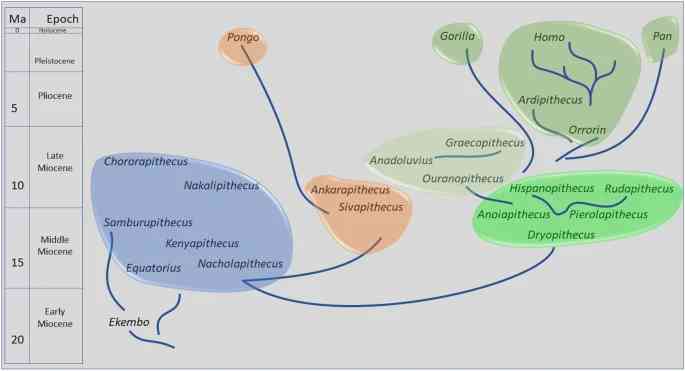
*****
A phylogeny of the taxa included in this analysis consistent with most of the cladograms presented here.
Taxa are positioned in chronological order without regard to geography, with most taxa only known from a limited time span. Exceptions are Ekembo and Sivapithecus, with longer time ranges, which are positioned roughly when they are most abundant, in both cases about mid-way in their known time ranges. The different colored “puddles” represent hominid clades and/or stages of evolution. These can also be imagined as pools of related species in somewhat delimited space and time with broad ancestor-descendant relationships. The lines are disconnected to reflect the difficulty in identifying actual ancestor-descendant relationships, but that these relations can be estimated between “puddles”. Blue puddle taxa are stem hominids and are all confined to Africa. Among these taxa the relations of Samburupithecus and Chororapithecus are unresolved in the cladograms except in so far as they are excluded from the clade that includes all Eurasian taxa and crown hominins. Other lines of evidence suggest that these taxa are members of the early or middle Miocene radiation of early apes (see text). The orange puddles are the pongines, which probably have their origin within the middle Miocene puddle, although not necessarily any of the taxa included here (another taxon, Griphopithecus, known from Europe and Türkiye, would be a member of the blue puddle but was not included in the cladistic analyses). While both are pongines, Ankarapithecus lacks derived features shared by Sivapithecus and Pongo, so the line representing the relationship between the latter two bi-passes Ankarapithecus. The three green-shade puddles represent the hominine clades as defined here. Bright green are the dryopithecins, with the younger taxa Rudapithecus and Hispanopithecus depicted as closely related and descendant from any of the older taxa or an unknown taxon sharing attributes with these three. The light green puddle includes the Balkan and Anatolian taxa, likely to have descended from somewhere in the dryopithecin puddle. Possible ancestor-descendant relationships are depicted in this puddle. The darker green puddle represents the crown hominines. The various lineages diverge from unknown ancestors, but probably a member of either of the older green shade puddles. Gorillas diverge first, followed by chimpanzees and humans. Orrorin and Ardipithecus are depicted in a manner consistent with their sister clade status, without implying a direct ancestor-descendant relationship.
*****
The animals that lived with Anadoluvius are those commonly associated with African grasslands and dry forests today, such as giraffes, wart hogs, rhinos, diverse antelopes, zebras, elephants, porcupines, hyaenas and lion-like carnivores. Research shows that the ecological community appears to have dispersed into Africa from the eastern Mediterranean sometime after about eight million years ago.
"The founding of the modern African open country fauna from the eastern Mediterranean has long been known and now we can add to the list of entrants the ancestors of the African apes and humans," said Sevim Erol.
Çorakyerler excavation site. This vertebrate fossil settlement near Çankırı, Türkiye, is one of the most important humanoid settlements in Eurasia. As a result of nearly 20 years of excavations, Çorakyerlar has taken its place among the important Late Miocene reference localities of Anatolia and Europe with 8 mammalian orders, more than 10 families and 43 species. Credit: Ayla Sevim-Erol
The findings establish Anadoluvius turkae as a branch of the part of the evolutionary tree that gave rise to chimpanzees, bonobos, gorillas and humans. Although African apes today are only known from Africa, as are the earliest known humans, the study's authors—which also include colleagues at Ege University and Pamukkale University in Türkiye and the Naturalis Biodiversity Center in The Netherlands—conclude that the ancestors of both came from Europe and the eastern Mediterranean.
Anadoluvius and other fossil apes from nearby Greece (Ouranopithecus) and Bulgaria (Graecopithecus) form a group that come closest in many details of anatomy and ecology to the earliest known hominins, or humans. The new fossils are the best-preserved specimens of this group of early hominines and provide the strongest evidence to date that the group originated in Europe and later dispersed into Africa.
The study's detailed analysis also reveals that the Balkan and Anatolian apes evolved from ancestors in western and central Europe. With its more comprehensive data, the research provides evidence that these other apes were also hominines and means that it is more likely that the whole group evolved and diversified in Europe, rather than the alternative scenario in which separate branches of apes earlier moved independently into Europe from Africa over the course of several million years, and then went extinct without issue.
"There is no evidence of the latter, though it remains a favorite proposal among those who do not accept a European origin hypothesis," said Begun. "These findings contrast with the long-held view that African apes and humans evolved exclusively in Africa. While the remains of early hominines are abundant in Europe and Anatolia, they are completely absent from Africa until the first hominin appeared there about seven million years ago.
"This new evidence supports the hypothesis that hominines originated in Europe and dispersed into Africa along with many other mammals between nine and seven million years ago, though it does not definitively prove it. For that, we need to find more fossils from Europe and Africa between eight and seven million years old to establish a definitive connection between the two groups."
Sourche: University of Toronto







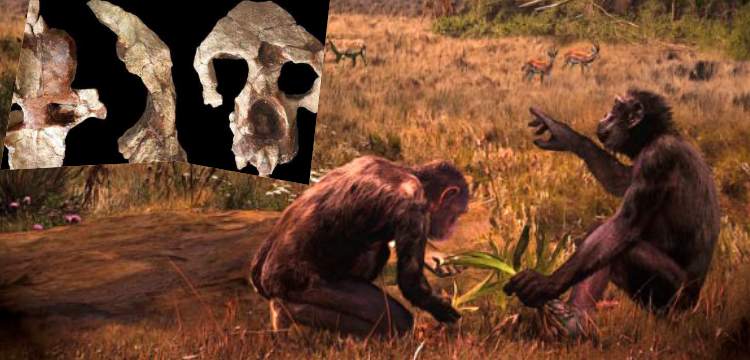
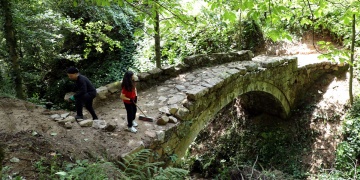 Ressam Serdar Abay, tarihi kemer köprüdeki yabani otları kızıyla temizledi
Ressam Serdar Abay, tarihi kemer köprüdeki yabani otları kızıyla temizledi  Archaeologists have discoveried a crusader altar in the Church of the Holy Sepulchre
Archaeologists have discoveried a crusader altar in the Church of the Holy Sepulchre 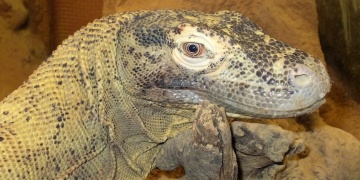 Komodo ejderinin demir dişli olduğu anlaşıldı
Komodo ejderinin demir dişli olduğu anlaşıldı 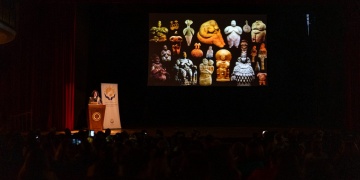 Doğa Taşlardan, Anadolu Tanrıçaları'ndan sonra Anadolu Bacılarının öykülerini anlatacak
Doğa Taşlardan, Anadolu Tanrıçaları'ndan sonra Anadolu Bacılarının öykülerini anlatacak 




